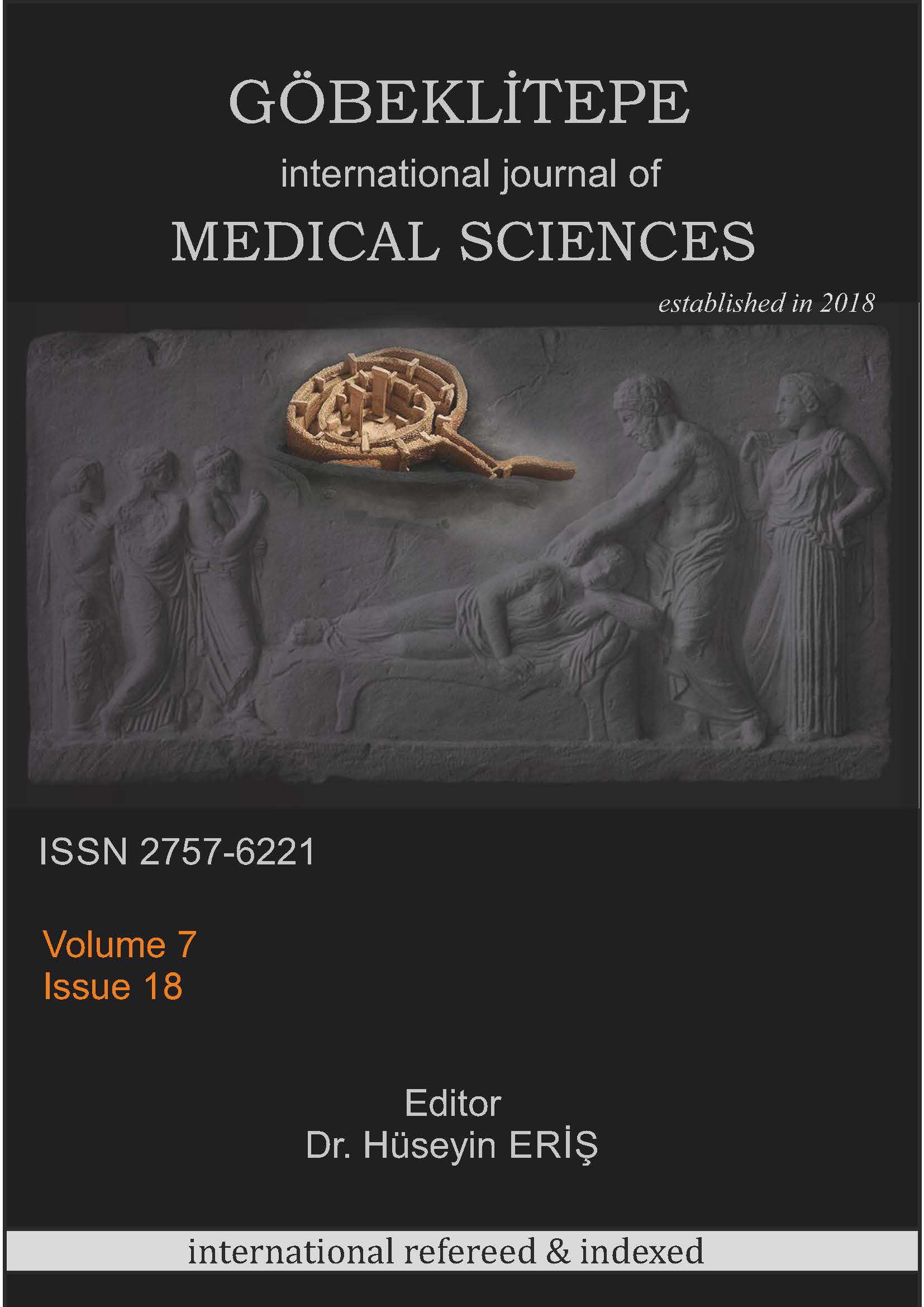ANTIOSTEOPOROTIC DRUG PREFERENCES IN PHYSICAL MEDICINE AND REHABILITATION CLINIC
Abstract
Osteoporosis (OP) is a systemic disease characterized by deterioration in the microstructure of bone tissue and low bone mass, resulting in increased bone fragility and increased likelihood of fracture. In this study conducted in the PTR department of Harran University Hospital, the files of patients who applied to our outpatient clinic between January 2022 and January 2023 were evaluated retrospectively. The patients were divided into two groups according to gender and age groups. The drug treatments received by the patients were evaluated according to gender and age groups. In our study, oral bisphosphonates were the most frequently reported, followed by denosumab. Alendronate was the most frequently reported drug in both men and women. OP is an important health problem that concerns both individuals and the entire society. Therefore, every individual in society should be informed about OP.
References
Gao L, Zhang SQ. Antiosteoporosis Effects, Pharmacokinetics, and Drug Delivery Systems of Icaritin: Advances and Prospects. Pharmaceuticals (Basel). 2022 Mar 24;15(4):397. doi: 10.3390/ph15040397. PMID: 35455393; PMCID: PMC9032325.
Alkan BM, Fidan F, Tosun A, Ardıçoğlu Ö. Fiziksel Tıp ve Rehabilitasyon Polikliniğimize Başvuran Hastalarda Osteoporoz İnsidansı. Turk J Osteoporos. 2011 Apr;17(1):0-0.
Türkiye Endokrinoloji ve Metabolizma Derneği Osteoporoz ve Metabolik Kemik Hastalıkları Tanı ve Tedavi Kılavuzu. BAYT Bilimsel Araştırmalar Basın Yayın ve Tanıtım Ltd. Şti. Baskı Tarihi:Temmuz 2022. ISBN:978-605-66410-6-0.
Arceo-Mendoza RM, Camacho P. Prediction of fracture risk in patients with osteoporosis: a brief review. Womens Health (Lond). 2015 Jul;11(4):477-82.
Kanis JA. Diagnosis of osteoporosis and assessment of fracture risk. Lancet 359(9321), 1929–1936 (2002).
Dequeker J, Tobing L, Rutten V, Geusens P. Relative risk factors for osteoporotic fracture: a pilot study of the MEDOS questionnaire. Clin Rheumatol. 1991;10:49-53.
Arden NK. Risk factors for osteoporosis. In:Arden NK, Spector TD (eds). Osteoporosis Illustrated, Current Medical Literature, London 1999:36-50.
Çalışkan A, İnanıcı F, Karahan S, Doğan A, Kutsal YG, Özdemir O, Hizmetli S, Kamanlı A, Kuran B, Öncel S, Sarıkaya S, Savaş S, Şenel K, Uğurlu H, Yazgan P. Fiziatristlerin Antiosteoporotik İlaç Tercihleri: Çok Merkezli Tanımlayıcı Araştırma. Turk J Osteoporos. 2012 Aug;18(2):0-0. doi:10.4274/tod.63634.
Breuil V. Precautions before starting a treatment for osteoporosis. Rev Prat 2012;62:204-8.
National Osteoporosis Foundation. The Clinician’s Guide to Prevention and Treatment of Osteoporosis. 2012.
Aypak C, Bircan MA, Özdemir A. Anti-osteoporotic Drug Utilization Rates for Secondary Prevention Among Patients with Osteoporotic Fractures. Rambam Maimonides Med J. 2022 Jul 31;13(3):e0017. doi: 10.5041/RMMJ.10473. PMID: 35701156; PMCID: PMC9345764.
Kanis JA, Cooper C, Rizzoli R, Reginster JY; Scientific Advisory Board of the European Society for Clinical and Economic Aspects of Osteoporosis (ESCEO) and the Committees of Scientific Advisors and National Societies of the International Osteoporosis Foundation (IOF). European guidance for the diagnosis and management of osteoporosis in postmenopausal women. Osteoporos Int. 2019 Jan;30(1):3-44. doi: 10.1007/s00198-018-4704-5. Epub 2018 Oct 15. Erratum in: Osteoporos Int. 2020 Jan;31(1):209. doi: 10.1007/s00198-019-05184-3. Erratum in: Osteoporos Int. 2020 Apr;31(4):801. doi: 10.1007/s00198-020-05303-5. PMID: 30324412; PMCID: PMC7026233.
Saito T, Sterbenz JM, Malay S, Zhong L, MacEachern MP, Chung KC (2017) Effectiveness of anti-osteoporotic drugs to prevent secondary fragility fractures: systematic review and meta-analysis. Osteoporos Int 28:3289–3300.
Reid IR, Billington EO. Drug therapy for osteoporosis in older adults. Lancet. 2022 Mar 12;399(10329):1080-1092. doi: 10.1016/S0140-6736(21)02646-5. Erratum in: Lancet. 2022 Sep 3;400(10354):732. doi: 10.1016/S0140-6736(22)01644-0. PMID: 35279261.
Yavropoulou MP, Makras P, Athanasakis K, Bournia VK, Mathioudakis K, Tsolakidis A, Kassi E, Kaltsas G, Mitrou P, Sfikakis PP. Prevalence and patterns of anti-osteoporotic drug use based on 2019 real-world nationwide data in Greece. Arch Osteoporos. 2022 Jun 28;17(1):86. doi: 10.1007/s11657-022-01126-5. PMID: 35761110.
Downloads
Published
Versions
- 2024-12-29 (3)
- 2024-12-29 (2)
- 2024-12-27 (1)
How to Cite
Issue
Section
License
Copyright (c) 2024 Göbeklitepe Sağlık Bilimleri Dergisi

This work is licensed under a Creative Commons Attribution 4.0 International License.




